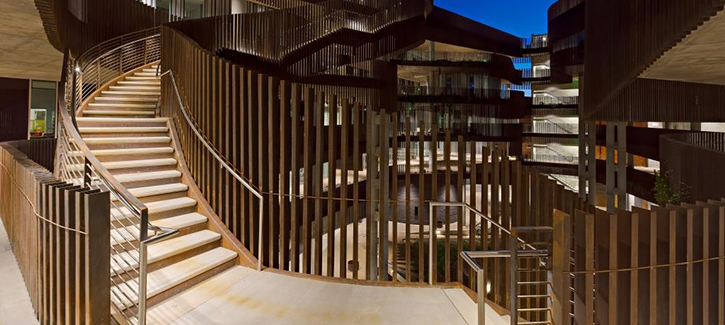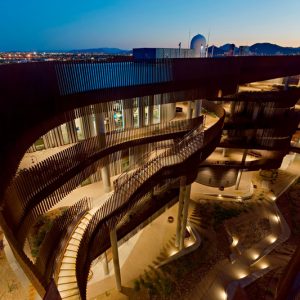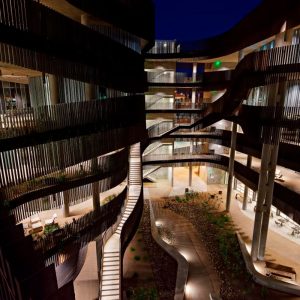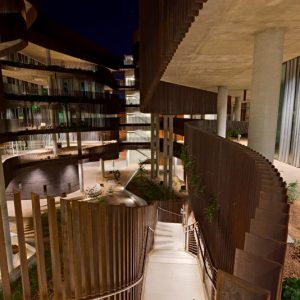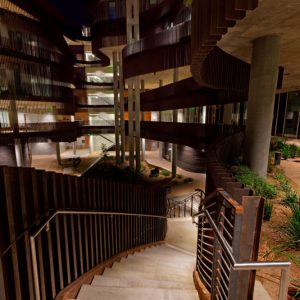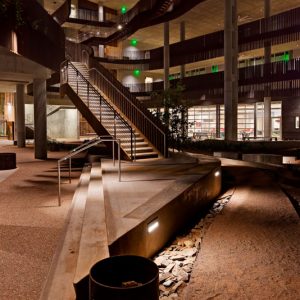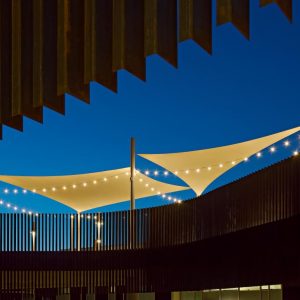Slot canyons – narrow, tall channels carved through otherwise solid rock – can be found anywhere in the world but are particularly numerous in Arizona and Utah. Formed over millennia by water and wind, these elegant, winding gorges in the earth are nature at its finest, and an iconic symbol of the American Southwest.
What better inspiration, then, for the design of the Environment and Natural Resources 2 building at the University of Arizona in Tucson? The building, which houses the Institute of the Environment, the School of Geography, the School of Natural Resources and the Environment, and Mathematics, has earned LEED Platinum certification and is the most sustainable building on campus, thanks to energy-saving design and innovative architectural solutions–including KLIK lighting.
Designed to mimic a slot canyon, with its curvilinear shape, shade elements and contrasting lightness and darkness, the ENR2 building is configured as two five-story rectilinear buildings united by an open courtyard, which acts as a canyon floor, providing a sheltered and shaded outdoor space for group meetings, solo study or special events. “Usable space on campus shouldn’t just be quantified as the space inside of buildings,” says Ladd Keith, Chair of Sustainable Built Environments at U of A. “The more we can build buildings that have open usable spaces outside…that is the most efficient building space you can have.”
Like slot canyons in the desert, natural daylighting is an important part of the overall beauty of the outdoor space. To supplement in low-light conditions and at night time, the designers from GLHN Architects & Engineers chose 1.5W asymmetric KLIK LEDpods™ for the five-story spiral staircase handrail and symmetric KLIK LEDpods at the canyon floor. The path lights at the courtyard floor were carefully positioned to also illuminate seating and planting areas while grazing the walls to highlight subtle masonry details. This shared use reduced both energy and construction costs and contributes to the sustainability of the building. “What I’m most proud of, though,” Henry Johnstone, principal designer for the project, told The University of Arizona News, “is that the building really has achieved actual, tangible energy and water savings in a space that really communicates the idea of sustainable building design. It’s more than just a building,” Johnstone said. “You can really appreciate and see what sustainability can be and look like.”
Project: University of Arizona, Environment and Natural Resource Building (ENR2)
Product: KLIK LEDpod™
Design Firm: GLHN Architects & Engineers Inc. Tucson, AZ

